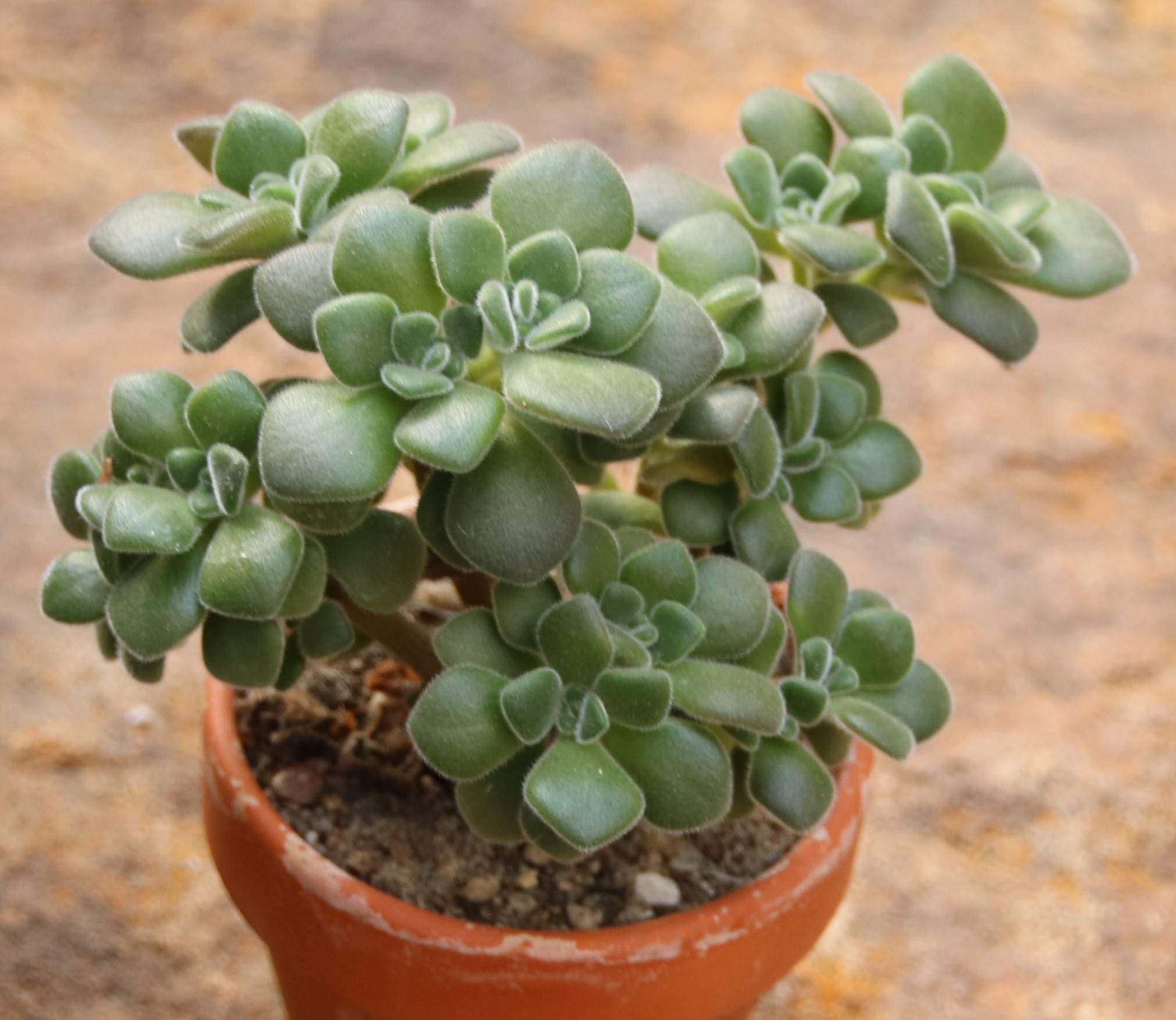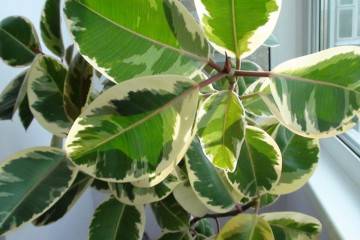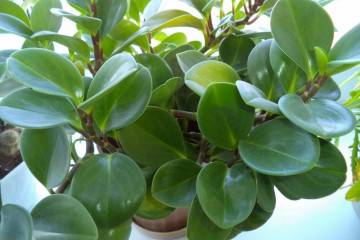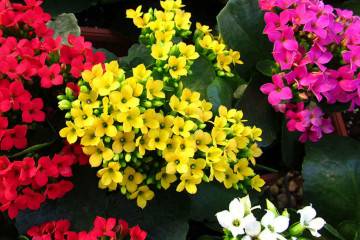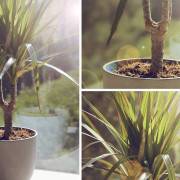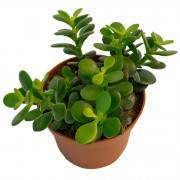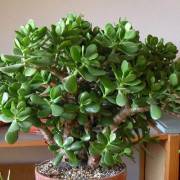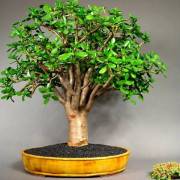Eonium tree - how to care for a flower
Content:
Aeonium succulent is a rather unusual house plant. Despite the fact that no special care is required for its growth, the flower is rarely grown in apartments. But if suddenly there is a desire to plant a rare indoor specimen at home, it is better to familiarize yourself in advance with all the features of the variety and its cultivation.
Aeonium: botanical description
The flower belongs to the Tolstyankov family and is a perennial. Depending on the variety, it reaches a height of 5 to 60 cm. A fully adult plant has an unusual appearance: leaves grow on the tops of bare stems, collected in massive rosettes, resembling exotic flowers in their shape. They can be of different shades: from light green to purple and even burgundy brown.
The main types of home aeonium
In total, more than 70 varieties of flowers are known in the world, and most of them are suitable for growing at home. For beginners in this business, it is better to choose the most popular varieties.
Eonium wavy (Aeonium Undulatum)
A succulent with a powerful silvery trunk. On their tops are dense dark green rosettes. The leaves have an unusual shape - narrow closer to the shoot and widening towards the edge. Eonium wavy flowers form dark yellow inflorescences.
Aeonium arboreum
Home care for this variety is quite simple. It is also called aeonium Nigrum (black). This species has stems similar to wooden trunks. It is characterized by large rosettes formed by spatulate leaves and located at the tops of the shoots. In height, it can reach up to 30 cm.
Aeonium Domesticum
This domestic variety is small in size, the flower rarely grows up to 30 cm. Its densely spaced branches diverge to the sides of the tree trunk and begin to bend closer to the top. The dark green leaves have slight curls inward. During flowering, a peduncle grows, on which no more than 7 flowers form a yellow inflorescence.
Eonium decorative (Aeonium Decorum)
A small tree that can reach up to half a meter in height. It is characterized by a large number of loosely growing branches, on which diamond-shaped marks from previously fallen leaves remain. The leaf plates are colored burgundy and form a spherical rosette.
Aeonium Virgineum
This species is characterized by the absence of a stem. All inflorescences of leaf plates grow in a dense group and emit a slightly perceptible aroma of balsam.The buds, opening up, acquire a bright yellow color.
Aeonium tiered, or dish-shaped (Aeonium tabuliforme)
Also known as Shelley, the disc aeonium has a rather unusual appearance for a house plant. Its flat rosette forms a plate-like rosette of leaves. The leaf plates are arranged like shingles and have small hairs along the edges. A peduncle with a yellow inflorescence can grow up to half a meter.
Aeonium Lindleyi
In this species, the stem is woody at the very base and many brown twigs depart from it. Glossy leaf plates with small villi have a spatula shape and a dark green color. Collected in small rosettes at the top of the stems, they exude a subtle aroma. Due to its golden flowers, this variety looks very bright during the flowering period.
Aeonium Kiwi
This species is the most colorful of the entire family, its leaf plates are painted in three colors: a light green center, a cream interlayer and a pink edging. Creamy white flowers form branched inflorescences.
Sedifolium (Aeonium Sedifolium)
This type of aeonium is considered dwarf, since the plant rarely reaches a height of 20 cm. It has small stems on which yellow-brown leaves with red stripes grow. The buds, blooming, turn into bright yellow flowers. This plant is quite moody. It loves a lot of light, but at the same time it does not perceive direct sunlight well.
Eonium: home care
Before you start growing an ornamental plant at home, you need to familiarize yourself with all the growing conditions in order to know how to properly care for it.
Lighting and temperature control
All types of aeonium are very fond of light, therefore, in the summer, it should be placed in a sunny place, you can even take it outside, and provide an additional source of light in winter.
You should also pay attention to the temperature regime. The plant loves coolness, so a room with a temperature of 16-23 ° C is suitable for it.
Watering and humidity rules
At a time when the flower is in the stage of active growth, it must be watered only when the soil dries out. In winter, the amount of water is reduced.
Eonium feels quite comfortable in apartments with low humidity levels. However, for preventive purposes, it is sometimes recommended to spray it from a spray bottle.
Top dressing and soil quality
For a plant, soil with a neutral acidity index, which does not have a large amount of nutrients, is quite suitable. To prepare such a substrate, leaf, sod, clay soil and sand are mixed.
It is recommended to fertilize eonium during active growth no more than once a month. It is better to use a special fertilizer for succulents for this.
Selecting the size of the container, replanting and pruning
To choose a container for a flower, you initially need to be small. A young plant must be replanted every spring, while choosing a pot slightly larger than the previous one. Adult bushes need to be transplanted only if the root system no longer fits in the container.
Old or damaged shoots should be cut off from the aeonium. Moreover, it is better to do this before the onset of the rest period. You can also do decorative pruning to maintain the shape of the shrub.
Reproduction methods
Breeding methods vary depending on the species. Stemless varieties can only be grown with seeds, while for shrubs it is enough to cut off the top and root it for two weeks in sand or water.
Eonium bloom, periods of activity and rest
At home, the plant rarely blooms. If the conditions are right, then every few years from June to August, tall peduncles may appear from the center of the rosettes, on which small flowers of white, yellow, cream or copper hue can appear. In winter, during dormancy, when watering and fertilizing are reduced, flowering is excluded.
Diseases and pests
Eonium is quite resistant to diseases and parasites, so the problems of the largest scale for it are mealybugs and rot.
To get rid of an insect, it is enough to wipe the leaves and stems of the plant with a cloth dipped in soapy water, and then treat it with insecticides. To get rid of rot, you need to reduce the number of waterings and check for a drainage layer in the pot.
Home aeonium is not yet a very popular type of indoor plant, but it is worth trying to grow it and it will immediately become clear that this unpretentious flower will become a worthy and unusual decoration of an apartment.






